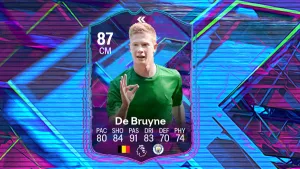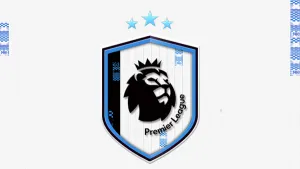NBA 2K10 Players Tendencies
POSTED September 11, 2009
Rob Jones, Gameplay Producer from 2K Sports, talks about Players Tendencies that they are incorporating into their NBA 2K10 Signature Play feature. This year, they have allowed for unprecedented depth in players from a different system of ratings, attributes, plays, and decision-making in AI. Let’s get into it.
82 Games
Last year, we introduced Living Rosters that made sure to promote players that had stepped up their game over an extended period of time. I know that a lot of you were excited by the continually updated roster and the unlocked animations. As a big fan of the sport, I watched as players changed their game due to trades, new roles within the team, and injuries. I analyzed a lot of what Synergy had going on, recording in-game box scores and categorizing how that was impacting an individual game. They do a great job of tracking many different tendencies of a player and breaking it down from position to position on the court. Synergy’s data definitely paints a comprehensive picture about what a player is doing on the court, but in my mind not a complete one. There were still questions lingering for me about a player’s tendency to use specific abilities over and over. I like to call it a player’s personality profile.
NBA players are gifted with an enormous skill set, but in the end, like all human beings, tend to rely on the things they are the most comfortable using. That, in itself, is the tell that great defensive players like Bowen and Battier have used to counter the attacks of great offensive players.

With this information in mind, we set out to build a new offensive AI with all new tendencies that mimicked what a player wants to do, instead of what he is doing. Think of it as being proactive in anticipating a player’s moves as opposed to just recording them. The AI is now meant to be fed information as to how an offensive player likes to attack his defender, from what point of the court he is coming and what he wants to do to finish a play. In essence, if he has me one on one, what is his preference?
The code that determines this choice is of course dynamic, so that it can adjust for a User trying to throw it off by using unorthodox tactics. It also understands the usefulness of certain moves in certain parts of the court, such that it will not find itself doing things that are not intelligent like double crossovers in the key.
At every point of decision, the game code now gathers all possible tendencies (and not the actual ratings themselves) to choose what to do and allows the game to be more intelligent than ever before. Say there is an animation that takes up more space than is physically allotted on the court or the opening is not there for a certain maneuver, the AI will ditch that action and find the next tendency a player would go towards. Freeing the choice up from ratings allows the AI to be given a set of directions based on their shot types and dribble types, attacking the basket versus settling for a jump shot, being a black hole in the middle versus looking to kick back out, etc.
This brings us full circle. I noticed that Synergy’s tendencies were really only changing when a player’s role would change, whether that was by injury or transaction. If a role player goes from being a garbage time player to a huge part of the rotation, obviously their stat line will see a boost but what is that based on? Only a shift in role creates this difference, but their actual play type has not changed. They would still make the same choices on certain points of the court. The stats were not really representing how they played, their decisions continued to play the largest role in the player they could be. If you looked at a player that played consistently, you would notice that what he did from week to week varied very little. This confirmed my theory of humans being creatures of habit.

Understand that I believe that all the tracking systems that are out there do a bang-up job of spitting out information about what they see players do. The simple fact is that while great players are adept at doing different things when challenged to do so, more often than not, they can rely on what they do 95% of the time, which means that over time, their tendencies flatline and change very little.
So we went to work to look for someone who could provide us more information about how players make their choices within a game so we could better present it within our simulation. This innovation would need such a large batch of data and choices that it became an undertaking that we needed to take outside our office with an organization dedicated to this practice. That was how our partnership with 82games.com was born. Interestingly enough, while they tracked some of the most obscure statistics, a lot of what we needed wasn’t in their domain… yet. While we could have taken this as a negative, we actually liked the idea that they would help us build the tendency database having our goals in mind. They physically tracked NBA games for us to derive the information we were looking for. The good thing is that while we built the system, they were flexible enough to accommodate changes to how the information was being delivered, in order to better recreate the players.
Play-Calling
With a new AI system, it was important to give our play-calling system a complete makeover.
First of all, we wanted to give the user more plays to access during the game. The old play-calling system felt very limited since we only allowed a maximum of 8 plays to choose from: 4 Quick Plays and 4 Set Plays by default. With the majority of the default plays designed for your star player(s) like Kobe, it left you with little or no plays to call for the other players on the court. This is no longer a problem in NBA 2K10 as you now have access to 4 plays per position during game play. Include the 4 Quick Plays and you have a total of 24 plays available to you.

The new play-calling system doesn’t end there. You can now assign any play to each and every position. If you like a particular Pick & Roll play, you can assign the same play to both your Center and Power Forward if you want. If you have a 3-point shooting Point Guard and Center, you can give them the same play as well. With the help of the in-game play diagram – PlayVision – you can now execute plays in NBA 2K10 like never before.
We’ve also made improvements on the overall Playbook screen UI. When you are looking for plays to assign to each position, the UI provides a filter for you based on the play types that you might be interested in: Isolation, Low Post, High Post, Three Point, Mid-Range, Pick and Roll, Pick and Fade. It makes it easier than going through a long list of plays. Another improvement to the UI that we have addressed is that when viewing a play, we now show you a ‘movie’ of the play so you can see where each player goes, as opposed to the flipbook last year.
Of course, you can set up these plays in practice mode and run them back to get your team up to speed. You can practice the same play over and over, and/or against any defensive sets. Remember, the AI will look to use these plays against you in Quick Game if it falls under their tendencies so it may take some time to learn what’s coming at you!
Living Rosters will update the playbook based on your team/coach, so your main squad will be up-to-date. Trades will happen that completely changes the team dynamics and with that, playbooks will need updating as well. I am sure that will be discussed in a future Living Rosters Insight.
Player Attributes
I also wanted to do a quick call-out on some changes I am quite excited about. As you may have heard, Player Ratings have been expanded to a 25-99 system, as opposed to a 50-99. This allows us a ton more shades of grey, as people who don’t have a certain skill in their arsenal will be awarded a 25 and there’s just more room to work with going upward from there. It allowed us to accurately drill down on each rating better. The increase in range also improved our ability to separate star from superstar. Think to how you envision Tony Parker vs Steve Nash. You might see them as equal players, but the fact is that they are separated by their skills in more ways than one. With the expanded range, it will be clearer why one player is different than the other, even if they come close in Overall Rating.
There are also a few more Player Attributes I should mention, including the all new shooting attributes Low Post Scoring and Inside Shooting. That expands shooting attributes to five from three, and differentiates Shoot Close into three different branches. We also added Offhand Dribbling and Ball Security. Ball Security in particular was one that we needed to add, because a player like Derek Fisher who is not the flashiest player would get a mid-70s score for Ball Handling last year. Sure he’s not crossover maven, but you’re not ripping him off the dribble either. You won’t see big men in the post be unstoppable as it pertains to keeping possession. If your player is not a ball handler, don’t be expecting any incredible spin moves to turn out well for you.

Conclusion
So I am really excited to hear your guys’ feedback about our integration with 82 games and what tendencies should be based off of. I think we’re offering the largest set of choices around for our AI and it will help immensely in our game play, both as an opponent and as a teammate. That’s all for now, I will be back with another Insight down the road.



